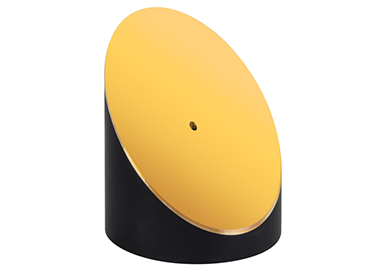Off-axis paraboloid reflector is a special optical element, its main function is to focus the incident light to a certain distance from the optical axis. The working principle is based on the principles of reflection and refraction of optics. When light strikes the mirror from a certain angle, the mirror will reflect the light to a specific location. This position depends on the shape of the mirror and the Angle of the incoming light. For a parabolic mirror, because its shape is part of a parabola, the reflected light is focused at a certain distance from the optical axis. This kind of mirror has a wide range of applications in many fields, such as laser technology, optical measurement, optical communication, etc.
Use of off-axis parabolic mirrors in the following fields:
In the field of communications, parabolic mirrors are widely used in satellite communication systems. In satellite communication, the transmission distance of signals is long, and a large number of signals need to be processed in a limited space. Parabolic mirrors can efficiently gather and transmit signals to the receiver, ensuring signal accuracy and stability. In addition, in LiDAR and optical sensing systems, parabolic mirrors also play a key role in helping the system achieve accurate detection and tracking of targets. In the field of scientific research, parabolic mirrors have a wide range of applications in the fields of spectroscopy, astronomy and particle physics. For example, in spectral analysis, parabolic mirrors can focus light of different wavelengths onto the detector of the spectrometer, enabling high-resolution and highly sensitive spectral measurements. In astronomy, parabolic mirrors are used to make high-performance telescopes that help scientists observe distant celestial bodies and study the mysteries of the universe.
The use and maintenance of off-axis parabolic mirrors need to pay attention to the following aspects:
Cleaning: The surface of the parabolic mirror is very smooth, and any small dirt or scratches may affect its performance. Therefore, care must be taken when cleaning the mirror, and special optical cleaners and dust-free cloths are recommended. Avoid cleaners that contain abrasive or corrosive chemicals.
Storage: Parabolic mirrors should be stored in a dry, dust-free place. Avoid exposing the mirror to humidity or temperature for long periods of time, which may cause the mirror to deform or rust.
Handling: When handling parabolic mirrors, violent vibration or collision should be avoided. Ensure that the mirror is always secured during handling to avoid any potential damage.
Installation: When installing parabolic mirrors, ensure that they are properly installed on a stable base and fixed with appropriate fasteners. Make sure the position of the mirror is properly adjusted so that it can work properly.
Maintenance: Check and maintain the parabolic mirror regularly to ensure its long-term stable operation. Check that the surface of the mirror is clean and free of scratches, check that fasteners are loose, and clean and maintain them regularly.
